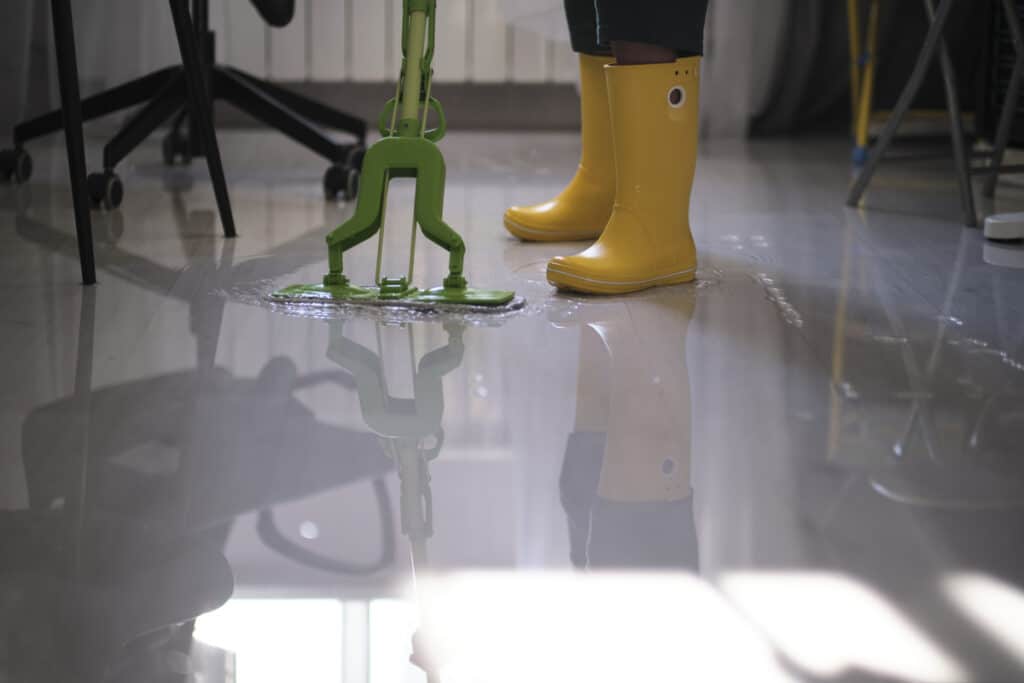Understanding Flood Alerts: A Comprehensive Guide

Table of Contents
Types of Flood Alerts and Warnings
Different levels of flood alerts indicate varying degrees of risk and urgency. It's crucial to understand these distinctions to react appropriately. Common alert types include:
-
Flood Watch: This signifies that conditions are favorable for flooding. Be prepared and monitor conditions closely. This isn't a call to immediate action, but it's a warning that flooding is possible. Stay informed through your chosen sources of severe weather alerts.
-
Flood Warning: Flooding is occurring or is imminent. Take immediate action to protect yourself and your property. This is a serious alert requiring prompt response. The National Weather Service issues these warnings based on observed conditions.
-
Flood Emergency: This is the highest level of alert, indicating life-threatening flooding. Immediate evacuation is necessary. Follow instructions from emergency officials and prioritize your safety. You might receive this through the Emergency Alert System.
Understanding the urgency associated with each alert level – flood watch, flood warning, or flood emergency – is critical for effective response. Ignoring a flood warning can have severe consequences.
Sources of Flood Alerts
Staying informed is paramount. Reliable sources of flood alerts include:
-
National Weather Service (NWS): The NWS provides accurate and timely weather alerts, including flood alerts, across the country. Their website and mobile app are essential tools.
-
NOAA (National Oceanic and Atmospheric Administration): NOAA provides comprehensive weather information, including flood forecasts and warnings.
-
Local News: Local news channels and websites often provide up-to-date reports on weather conditions and flood alerts specific to your area.
-
Weather Apps: Many weather apps offer personalized weather alerts, including flood alerts, based on your location. Ensure the app has accurate location services enabled. Check for reliability and accuracy before fully relying on any specific app for emergency alert system information.
Sign up for alerts from multiple sources to ensure you receive timely warnings, regardless of any single service's potential outage.
Understanding Flood Risk in Your Area
Determining your personal flood risk is a vital step in preparing for potential flooding. Utilize the following resources:
-
Flood Risk Maps: These maps, often available through FEMA (Federal Emergency Management Agency) or your local government, show areas with a high probability of flooding. Check to see if your property is in a designated flood plain.
-
Flood Risk Assessment: Conduct a personal assessment, considering factors such as your proximity to water bodies, elevation, and local drainage systems.
-
Flood Insurance: Consider purchasing flood insurance, even if you're not in a high-risk area. Standard homeowner's insurance typically doesn't cover flood damage. Understanding your flood risk assessment can help you make informed decisions about insurance.
Proactive flood preparedness through risk assessment is far more effective than reacting to a flood alert after it’s issued.
Essential Actions During a Flood Alert
A well-defined action plan is crucial. Here’s a step-by-step guide:
-
Flood Watch: Monitor weather reports, prepare an evacuation plan, gather essential supplies (see your flood preparedness checklist below), and secure valuable items.
-
Flood Warning: Move valuables to higher ground. Consider evacuating if instructed by authorities. Begin implementing your evacuation plan.
-
Flood Emergency: Evacuate immediately to designated shelters or safe locations. Follow instructions from emergency services.
Flood Preparedness Checklist:
- Emergency contact information
- Important documents (stored in waterproof containers)
- First-aid kit
- Water and non-perishable food
- Flashlight and batteries
- Radio
Following official instructions is paramount during a flood. Your safety is the priority. This flood safety tips list is not exhaustive and should be supplemented with local advice.
Post-Flood Actions and Recovery
After the floodwaters recede:
-
Safety First: Avoid floodwaters, as they may be contaminated. Use caution when entering your home, checking for structural damage.
-
Contact Authorities: Report any damage and request assistance if needed.
-
Flood Damage Assessment: Document damage to your property with photos and videos for insurance claims.
-
Flood Cleanup: Clean and sanitize your home thoroughly, discarding contaminated items.
-
Flood Insurance Claims: File claims with your insurance company promptly. Understand your policy’s coverage and procedures for filing a flood insurance claim.
Seek assistance from disaster relief organizations for support with post-flood recovery. Resources for financial aid and rebuilding efforts are often available.
Conclusion: Staying Safe with Effective Flood Alert Strategies
Understanding the different types of flood alerts, from a simple flood watch to a critical flood emergency, is fundamental to effective flood preparedness. The reliability of sources like the National Weather Service and local authorities is vital in staying informed. By understanding your flood risk assessment, developing a proactive evacuation plan, and having an emergency kit ready, you significantly enhance your safety. Remember, early preparation is key. Sign up for flood alerts in your area today and develop a comprehensive flood preparedness plan. Don't wait for a flood alert to act; proactive preparation is your best defense against the devastating effects of flooding. Creating an effective flood alert system for your household is crucial for staying safe.

Featured Posts
-
 Mia Farrow And Sadie Sink A Broadway Encounter
May 25, 2025
Mia Farrow And Sadie Sink A Broadway Encounter
May 25, 2025 -
 Explorer La Carriere Fascinante De Melanie Thierry
May 25, 2025
Explorer La Carriere Fascinante De Melanie Thierry
May 25, 2025 -
 Konchita Vurst O Evrovidenii 2025 Ee Predskazanie Chetyrekh Potentsialnykh Pobediteley
May 25, 2025
Konchita Vurst O Evrovidenii 2025 Ee Predskazanie Chetyrekh Potentsialnykh Pobediteley
May 25, 2025 -
 Naomi Kempbell 55 Rokiv Stil Ta Krasa Supermodeli
May 25, 2025
Naomi Kempbell 55 Rokiv Stil Ta Krasa Supermodeli
May 25, 2025 -
 Naomi Kempbell Nayvidvertisha Fotosesiya Za Vsyu Kar Yeru
May 25, 2025
Naomi Kempbell Nayvidvertisha Fotosesiya Za Vsyu Kar Yeru
May 25, 2025
